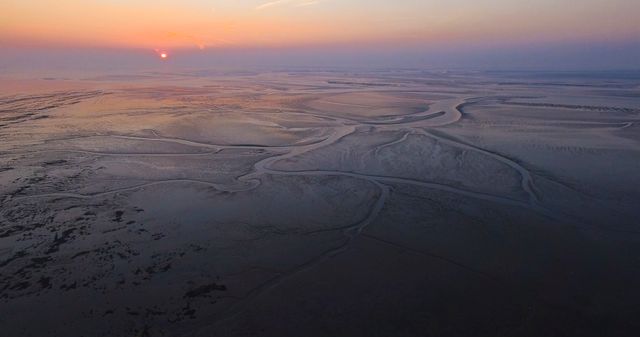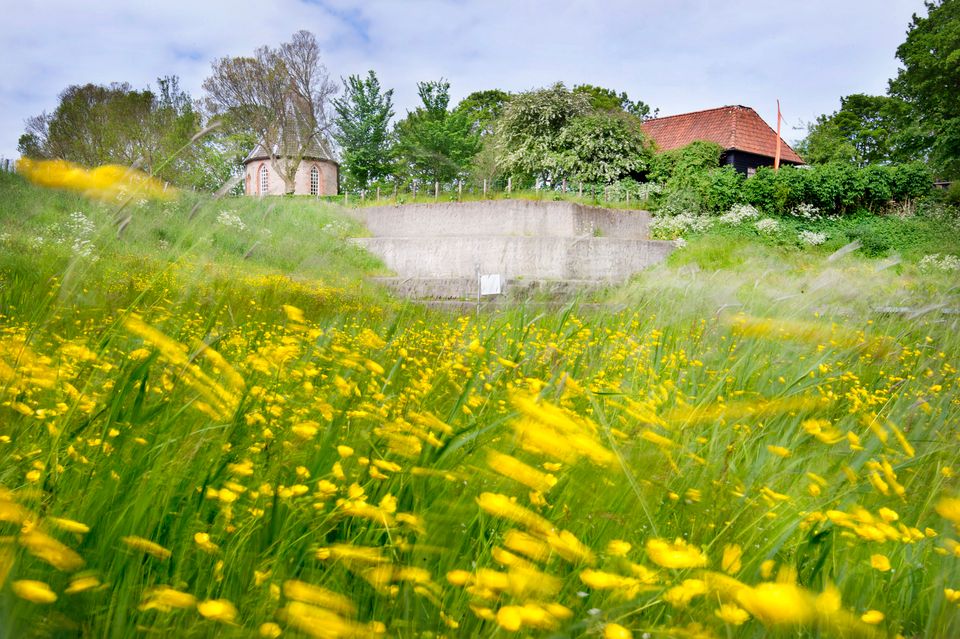Hegebeintum: highest mound in the Netherlands
The landscape along the Frisian Wadden coast is one of the oldest cultural landscapes in Europe. The first inhabitants who settled in the higher areas of the marshlands in the 6th century BC protected their homes and belongings from the sea water. They did this by elevating the surrounding ground and creating artificial hills, the so-called ‘mounds’, ‘wierden’, ‘wurten’, ‘warften’ or ‘værfter’.
During the following centuries they were heightened regularly with clay, manure and other household waste. Most of the mounds are 2-7 metres above NAP. But the hill dwelling in Hegebeintum is truly the cherry on the cake at 8.80 metres above sea level.
Rich history
Not everyone was poor in the coastal area of northern Holland. The many pieces of gold, silver and bronze jewellery and coins are a testament to this. The findings point to local elites with King Redbad being the most famous. People were all too eager to show off just how important they were and how very wealthy as well.
These findings also show that there was no question of isolation here. The inhabitants of this northern region had trade networks with Scandinavia and England already in the Middle Ages. And the many Roman discoveries are proof that the area was of global importance. The Frisians were not only farmers; they were also seafarers and merchants. Overseas trade blossomed and the Wadden coast was one of the most densely populated areas in Europe.
Fertile mound soil
Around the year 1000 farmers first began building the sea dikes. In the Middle Ages, around 1200, they slowly began to reclaim the vast marshlands, turning them into polders. The mounds remained basically completely intact until the mid 19th century but after that people began to dig them away to use the fertile soil as fertiliser on less-fertile soil in other areas. Entire dwelling hills disappeared this way; unless a church was built on it. And so was it that from the dwelling hill of Hegebeintum, originally approximately 9.5 hectares, only a steep and small part remains.
Visitors centre
There is a visitors centre at the foot of the mound. Here the story of how the dwelling hill was created and then dug away in the 19th and 20th centuries is told. It is also where Beitske, the noble woman who was buried in a tree trunk in the 7th century, was found and can be seen in the Fries Museum.
Still longing for more? Visit the reconstruction of the sod house and the Yeb Hettinga museum in Firdgum, see the royal Frisian treasures in Wijnaldum and experience the unique former Middelzee in Oude Bildtzijl. More info at: http://wqd.nl/iBSl. There are even plans to build a mound again outside the dike: de Terp fan de Takomst in the village community of Blija together with the Sense of Place project.
DISCOVER THE STORY WITH THIS ROUTE:
-
Water Heritage
Water Heritage

-
Wadden Coast Friesland
Wadden Coast Friesland

